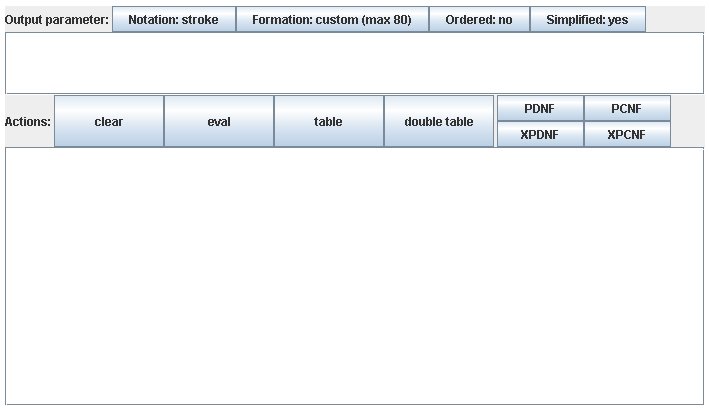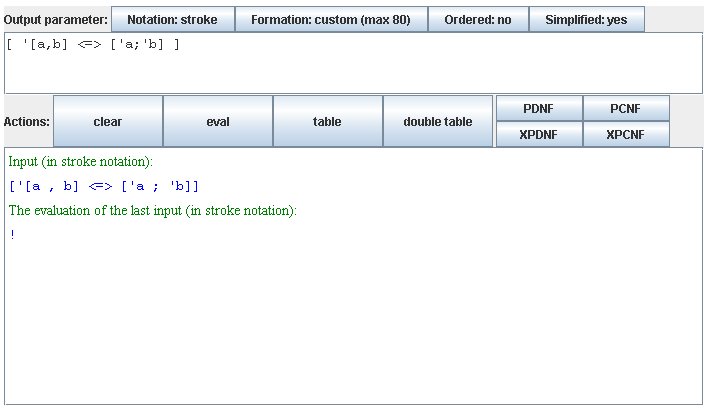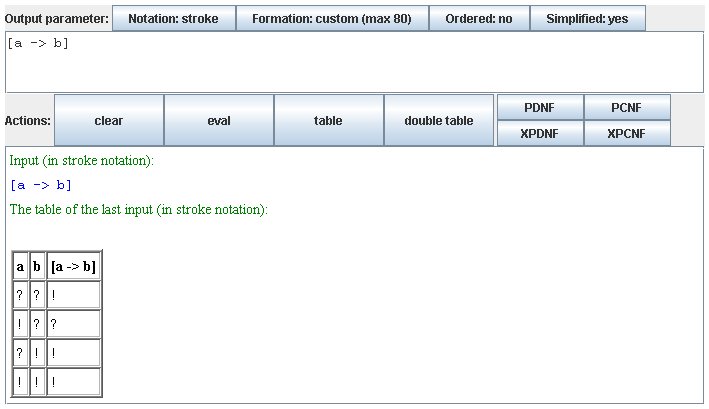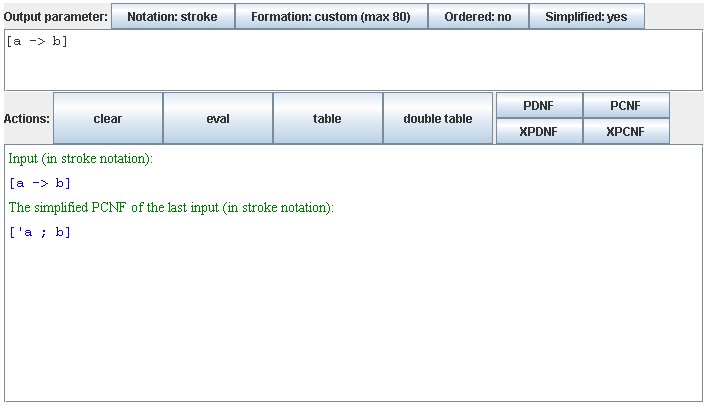 bucephalus.org
bucephalus.org

This is the plain panel of the bucanon applet, which appears if the browser understands Java and everything works fine.
The features may vary a little from system to system. The example here is taken from a Windows XP machine.

First, insert a boolean formula, say
[ '[a,b] <=> ['a;'b] ]reading
not (a and b) is equivalent to (not a or not b).Then call an action, e.g. eval, and view the result in the output area:
So the result is !, standing for true. (The symbol for false is ?.)
- Input (in stroke notation):
- [ '[a,b] <=> ['a;'b] ]
- The evaluation of the last input (in stroke notation):
- !
Stroke notation means that comma, semicolon and apostrophe (, ; ') are used for conjunction, disjunction and complement, respectively. Alternatively, arithmetic notation uses * + - for the according operations. The user may input any variation of both notations.

Insert a boolean formula such as
[a -> b]reading
a implies bPushing the table button generates the bit or truth value table.
Again each ? stands for false, each ! stands for true. That way, any non-empty word such as a, b, hallo, etc. and all integers such as 0, 1, 1234 etc. can be used as an atom or variable in formulas.

Let us take the example formula
[a -> b]again. The Prime Disjunctive Normal Form is generated by the PDNF button and it is given by
['a ; b]reading
not a or bTo be precise, this result is the simplified PDNF, saying that e.g. unary conjunctions [, a] are simply replaced by their only argument a.
The dual counterpart of the PDNF is the Prime Conjunctive Normal Form or PCNF, and both forms also have expanded versions (XPDNF and XPCNF) which basically preserve all the atoms of the original form.
These Prime Normal Form generations are the real strength of the program and its underlying algorithms, because all traditional problems of propositional logic systems condense into one and the same button push. Need to decide whether a formula is a contradiction or tautology? The simplified PDNF must be either ? or !. Need to know whether f1 implies f2? The simplified PDNF of [f1 -> f2] must be !.
For more information see BucanonGuide.html.